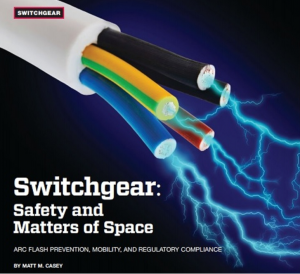
Emergency Backup Case Study
May 2019
Client Profiles
Auburn University
Built in 1969, the Haley Center at Auburn University is home to the College of Education classrooms, bookstore, administrative offices, computer labs, and a dining hall. As the tallest building on campus, it has a labyrinth of corridors that regularly confuse new students. It houses the main power source and backup generator for campus-wide life-safety systems. Because of this, the system and its backup generator must be tested regularly.
“At Auburn University, options for temporarily shutting down power can be limited. Sometimes it’s hard to schedule an outage because it affects so many people due to the critical nature of the building’s services and functions. That’s why AU needs a way to load bank or test an emergency backup generator quickly and efficiently, with minimal downtime.”
– Adam Mills, Project Engineer
Mills-Conoly Engineering
Montgomery, Ala.
A New Hampshire college
A New Hampshire college distributes its own power to select campus areas, including its renovated, main dining commons. The institution’s engineering and utilities team recently installed a large, new backup generator at the facility. The engineers know that in order to comply with NEC 2017 700.3(F) the system must include a provision to connect a portable backup generator.
“We test our generators under load weekly – which is more frequently than code requires. Some of our generators aren’t loaded adequately, and some don’t have an MTS installed. When we bring in a portable generator or load bank, at times we have to tear apart the wiring to hard-connect the portable unit, which means we have to close the building because emergency backup power isn’t available during maintenance. It’d be a lot easier if we’d install transfer switches that allow us to switch to and from temporary equipment.”
– Laura A. Black, Electrical Engineer
Hanover, N.H.
A leading North Carolina university
The fuel pump failed on a permanent backup generator at a public television center for a leading North Carolina university. Fixing it meant leaving the facility without backup power in the event of an emergency. Before starting the repair, engineers looked for a better way to hook up a backup generator during future emergencies and discovered this also meant installing a manual transfer switch.
“We like to spec backup-power products that are straightforward and easy for our clients to use. Equipment needs to be clearly marked and require minimal training to operate. It’s important to us because, when there’s an outage, we don’t want to leave users searching for a manual in the dark to get the power back on.”
– Addison M. Dee, PE, Electrical Project Engineer
McKim & Creed, Inc.
Raleigh, N.C.
Choices
Permanent or portable? The growing challenge of backup power generation at higher-education institutions
As centers of both education and community life, colleges and universities are challenged with meeting the needs of a diverse range of people and activities. From student housing and dining to classrooms and administrative offices, sports arenas and arts venues, medical facilities and research labs, assuring reliable backup power in the event of an emergency or outage is of paramount concern. The challenge becomes even greater when considering aging infrastructure, the rise of traditional and non-traditional students, and the emergence of extreme weather patterns that have led to an increase in power outages across the U.S.[1]
Guaranteeing uninterruptible backup power by installing a permanent generator and ATS, which are required for certain mission-critical applications and life-safety systems, requires costly, ongoing, special testing and maintenance. This is why many engineers specify provisions for quick connection of a load-bank testing unit and/or portable generator. The goal is to ensure standby systems are always ready and comply with regulatory testing requirements.
When making a decision about the best type of backup-power system for non-critical applications, where instantaneous power restoration isn’t required, the high cost and space requirements of a permanent generator often make portable power generation the best choice.
University challenges
- Ensuring the safety and well-being of large numbers of academic and community users in a diverse range of operating facilities and situations
- The expense and logistics of installing a permanent backup generator and automatic-transfer switch
- Providing backup power to a permanent generator while down for maintenance or repair
- Disruptions to campus life caused by outages when testing or servicing a permanent generator
- Complying with NEC 2017 700.3(F), which requires built-in, temporary power-connection capabilities for an emergency system that relies on a single, alternate power source while the alternate source is disabled for maintenance or repair
- Needing an electrician to switch from utility power to backup, and vice versa, to reduce the risk of back feeding or cross-connecting power sources
- Time-consuming and inefficient rewiring to accommodate a portable load bank
- Wet stacking and diesel-engine failure caused by repeated, insufficient loads while routinely exercising a permanent generator
- Confusion as users rush to restore power when the lights are out
Solutions
Auburn University: Ensuring backup power to the life-safety system
Mills-Conoly Engineering is a professional engineering consultant to Auburn University. All four of its engineers have degrees in electrical engineering from the university. MCE specified the installation of an ESL Power Systems TripleSwitch™ to provide an easy connection to portable backup power for the life-safety system housed in the AU Haley Center. They installed a 300kW permanent backup generator along with a TripleSwitch that enables users to connect a temporary portable backup generator safely if the permanent generator goes offline.
With CAM-lock-connectors that allow users to connect a portable generator and load bank quickly, the mechanically interlocked TripleSwitch breakers provide a failsafe way to transition from utility power to backup generator or to test a load bank – without endangering users or infrastructure. Now the university’s life-safety system complies with NEC 2017 700.3(F), which requires a means of connecting a temporary alternate power source during maintenance. The new TripleSwitch enables Haley Center technicians to load-bank test the building’s main generator without disconnecting wires inside the permanent generator.
New Hampshire college: Retrofits and new installations
At the New Hampshire college, most buildings have dedicated, permanent backup generators for emergency and standby power. The school tests all generators with load banks annually, as required. Its engineering and utilities team has firsthand experience with generators that have problems due to engine wet stacking. They’ve learned the hard way that a proper, permanent load-banking capability eliminates the dirty job of cleaning out excess soot that collects in a lightly loaded generator’s diesel-exhaust system.
The institution prefers to install permanent manual-transfer switches and its performing arts center already had an outdoor, portable-generator docking station. Engineers opted to add a TripleSwitch because it assures temporary-source-of-power code compliance. Later, while renovating the dining commons, the NEC issue came up again. This time, however, the college requested installation of a TripleSwitch from the outset and now looks forward to capably installing automatically switched, permanent generators at other campus facilities.
Manual-transfer switching made easy at a North Carolina university television transmission site
MEP engineering consultants McKim & Creed work on projects for the state of North Carolina. The firm’s principal engineers have specified the installation of ESL TripleSwitch units in a number of educational settings, including an emergency-power system for a university public-television-station site in Research Triangle Park.
McKim & Creed opted to specify ESL Power Systems products for several reasons, and product simplicity was at the top of the list. Everything is clearly marked, which makes it easy for users to attach cables for a portable generator or load bank. There are no Kirk locks or keys. The engineers also like the fact that ESL is one of the few companies actively developing new products to comply with the NEC 2017 700.3(F) ‘Temporary Source of Power’ code. Finally, ESL makes the engineers’ jobs easier by responding quickly to technical questions about product applications and solutions. For McKim & Creed, that level of responsiveness is a big plus.
Actions
More universities are discovering the advantages of temporary/portable backup power
When it comes to providing on-campus backup power, administrators are faced with a simple question: ‘How fast is necessary?’ Does an application call for immediate, automatic backup power, the kind of critical-facility solution that requires installing a permanent backup generator and ATS, with the unavoidable expenditures, maintenance, and logistics? Or is there a simpler, less-expensive solution: portable, temporary backup power restored within minutes via an ESL StormSwitch™?
For many universities, in a variety of applications, one solution that addresses a number of different challenges is to plan for portable-backup power in the future by installing a manual-transfer switch today.
We’ve installed only ESL units and we can think of no reason to install anything else.
Caleb Cofield is a project manager with Electrical Technicians, Inc., an experienced industrial electrical contractor that serves the Auburn University campus. Caleb says, “We’ve installed at least three ESL manual transfer switches at AU recently. The StormSwitch is one of the most robust – and nice-looking – devices we install. It’s very well made. It’s well organized and it’s got plenty of room for pulling in multiple, parallel lines of conduit and wiring. We’ve installed only ESL units and we can think of no reason to install anything else.”
About us
ESL Power Systems, Inc. is the global leader in providing safety-interlocked power solutions for cord-connected devices. Since its inception in the early 1990s, ESL has become an innovator in designing and manufacturing top-quality electrical products including:
- Manual transfer switches for emergency power
- Electrical connecting devices for refrigerated containers and RTGs
- Ship-to-shore power connection equipment
- Company switches for set-stage applications
- Shipyard power distribution equipment
- Wayside power connection applications
As a certified small business, ESL is proud to offer solutions with the lowest cost of ownership in the industry. ESL demonstrates its continuous commitment to customers by delivering sound workmanship on time and within budget.
Download TripleSwitch Product Specifications
[1] ‘Power Outages On The Rise Across The U.S.,’ Inside Energy. Jordan Wirfs-Brock, 18 Aug. 2014.




